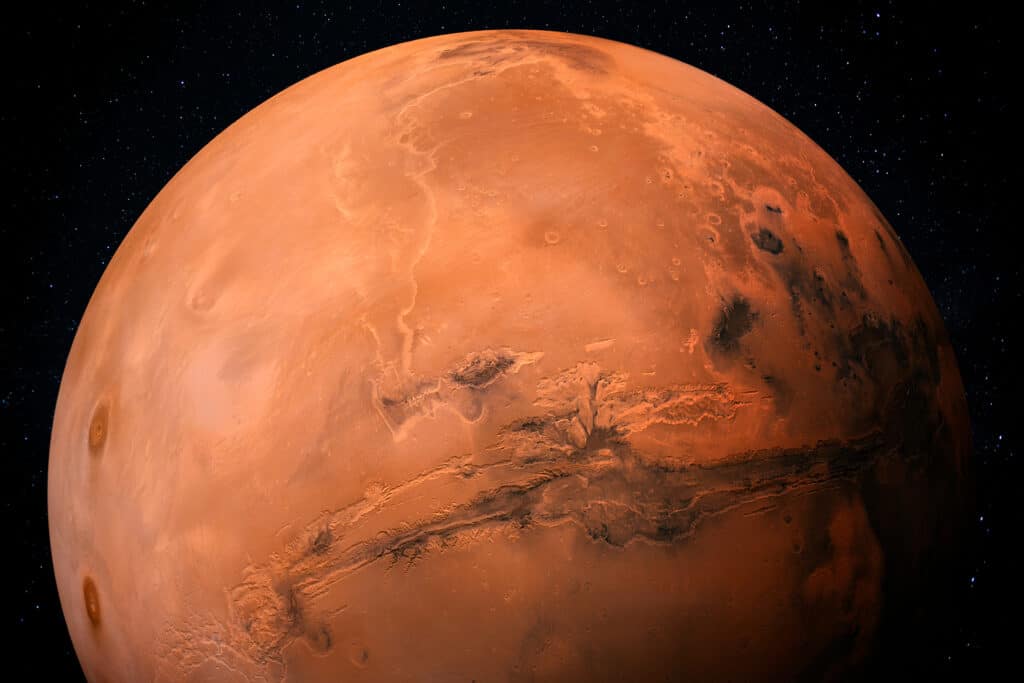If humans are to one day have the option of buying real estate on Mars, a new study is paving the way to make the sci-fi fantasy a dream come true. Researchers at the University of Sussex have ingeniously repurposed what was once Martian waste into a beacon of hope for sustainable living.
Under the guidance of Dr. Conor Boland, Martian nanomaterials, mere specks in the vastness of space, are being reshaped into the building blocks for renewable energy and sturdy construction materials, offering a glimpse into a future where humanity and the Red Planet coexist harmoniously.
Nanomaterials: A Giant Leap for Martian Sustainability
The term “nanomaterials” might sound complex, but it refers to incredibly tiny components, thousands of times smaller than a human hair. These materials hold immense potential due to their unique properties. The Sussex team, utilizing techniques and resources from the International Space Station and NASA, focused on these nanomaterials for renewable energy and construction on Mars.
Gypsum, abundant on Mars, could be a game-changer. The researchers used a “green” liquid-based method to exfoliate gypsum into nanobelts — incredibly thin, flexible structures with surprising characteristics. These nanobelts were obtained from two types of gypsum: selenite and satin spar. Despite their different appearances — selenite being light brown and satin spar milky white — they both yielded similar high-quality nanobelts.
The nanobelts displayed unique electronic and mechanical properties. Through precise techniques like scanning electron microscopy and Raman spectroscopy, scientists observed that these belts have adjustable electronic properties and are robust against environmental changes. This adaptability is key for applications in optoelectronics and catalysis, especially in generating hydrogen fuel, an essential resource for sustainable energy.
“This study shows that the potential is quite literally out of this world for nanomaterials,” Dr. Boland says in a statement. “Our study builds off recent research performed by NASA and takes what was considered waste, essentially lumps of rock, and turns it into transformative nanomaterials for a range of applications from creating clean hydrogen fuel to developing an electronic device similar to a transistor, to creating an additive to textiles to increase their robustness.”

What sets this research apart is the sustainable approach adopted throughout. The team relied on water-based chemistry and low-energy processes to identify electrical properties in gypsum nanomaterials. This not only makes the process eco-friendly but also ensures continuous water collection and recycling.
Implications For Mars — And Earth Too
While the immediate benefits of this research might seem Mars-centric, Dr. Boland emphasizes the broader implications for Earth: “This opens avenues for sustainable technology – and building – on Mars but also highlights the broader potential for eco-friendly breakthroughs here on Earth.”
The anhydrite nanobelts could be used in electronic devices, sensors, and as reinforcing agents in materials, enhancing their strength and durability. This not only opens new avenues in nanotechnology on our planet, but also promotes the use of sustainable materials.
Scientists are optimistic about the feasibility of these processes on Mars, noting that they only require naturally occurring materials. “Everything we used could, in theory, be replicated on the red planet,” notes Boland. “Arguably this is the most important goal in making the Martian colony sustainable from the outset.”
The team’s research is published in the journal Advanced Functional Materials.












